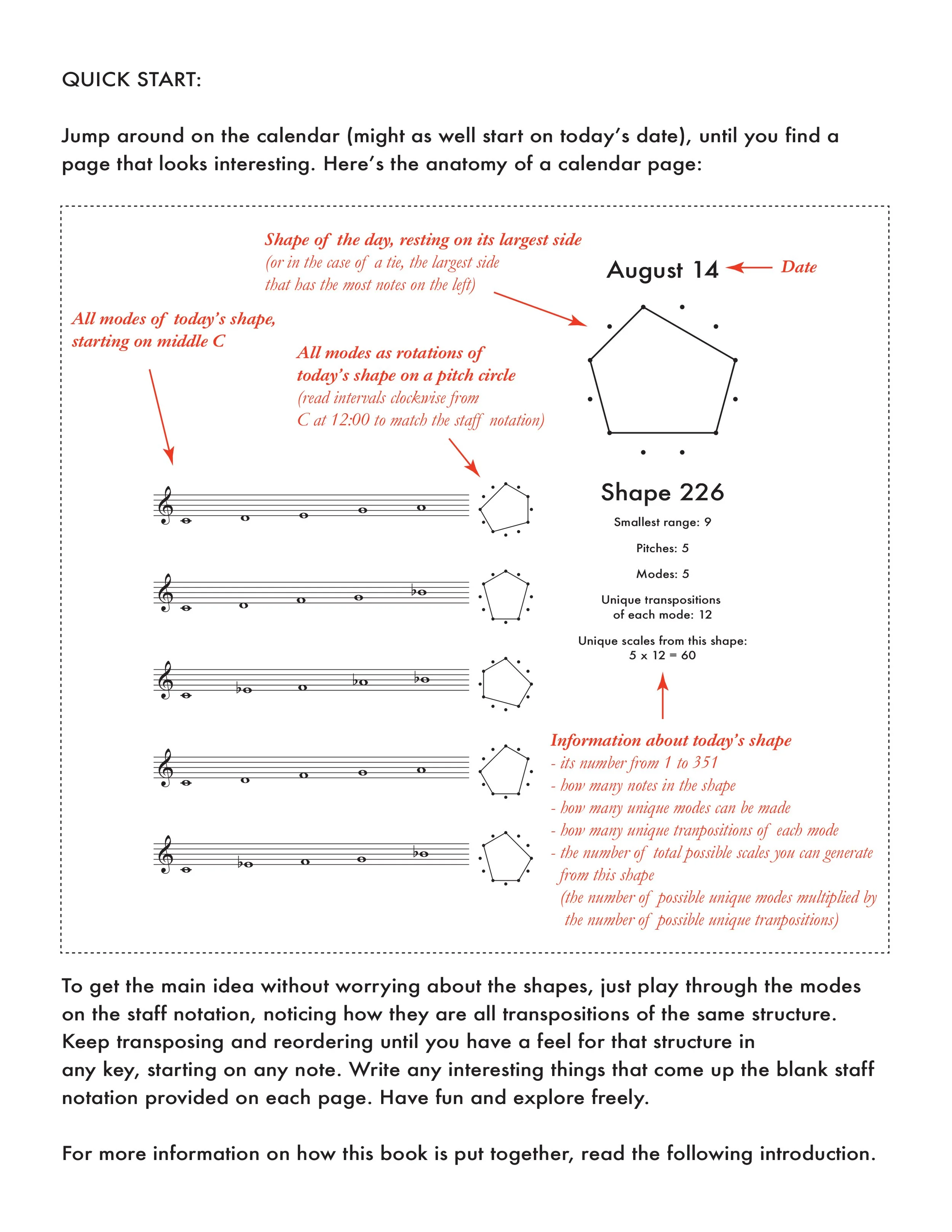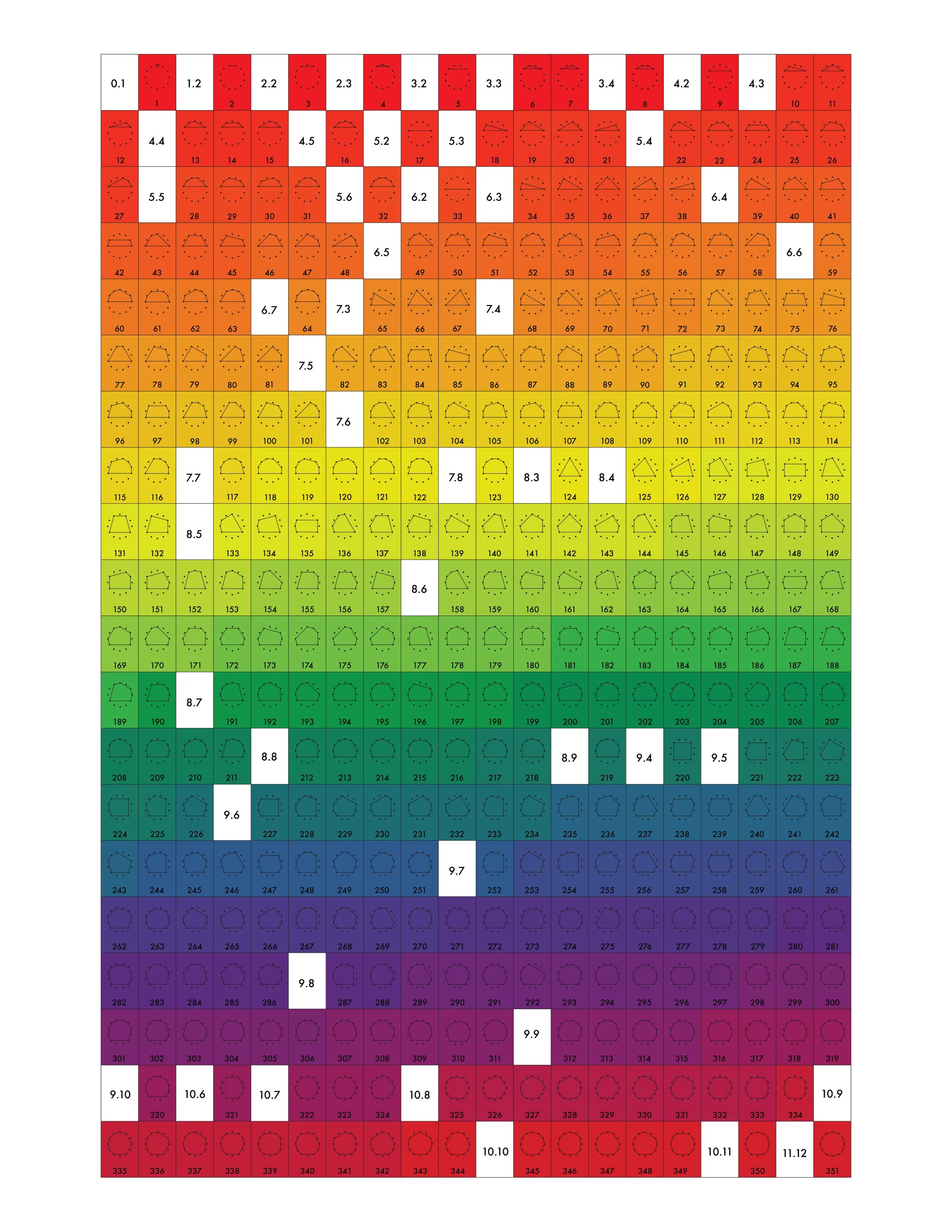ABOUT THIS BOOK:
What you have here is a list of musical scales. You can find any collection of notes from 1 to 12 tones somewhere in it. The format is made to be a practical reference or journal. I’ve been working on it for a while now, trying to make a sourcebook for my own work that’s orderly and useful. None of the data in here is new to the world, but the delivery system is something I’ve designed to be simple and intuitive.
Numbers: There are 351 shapes in the book. This isn’t arbitrary - it’s what you get when you find all of the unique note formations that are possible with 12 tones (2048) and then group them into families of modes from the same scale. You can arrive at a lower numbers of basic structures if you say that mirror images are sonically equivalent. But if you hear a major and minor triad as qualitatively different, then 351 is the number for you. To make navigation easier, the colors of each page change every 9 days, working through a spectrum of 39 hues.
Why a calendar: There’s potentially a huge amount of material to wade through in this type of project. You could write out every scale on a staff with every transposition, the names it’s known by in various musical traditions, the way it connects to similar scales, examples from musical repertoire, all kinds of stuff. And this has been done in heavy books and endless tables of data. As someone who is easily confused, my goal here is to make the thing as streamlined as possible, with clean pages that don’t distract with a bunch of clutter and redundancies. I’ve always enjoyed the challenge of presenting complex ideas in plain language and minimalist design, and have always been vexed by theory books that require the reader to know a bunch of special jargon and obscure references. Music theory doesn’t have to be a private club. So in this book, musical shapes progress in a basic format that everyone recognizes (a calendar) with daily melodic prompts, each one different from those before. There are no rules or agenda - the main goal is to provide the reader an inclusive point to entry to discover raw melodic materials for creative practice.
Thanks: Because I do things mostly visually and at the instrument, I had some help in the most tedious parts of getting this book into a presentable form. For years it’s been scribbles and hieroglyphics that needed a decent translation. Thanks go out to Natalie Bloomfield for proofing my shapes and crunching numbers, Alex Levine for valuable feedback, and Noah Becker for getting the data onto the staff. The notes and shapes have been proofed many times now, but if you see an error, please let me know and I’ll correct it in future editions.
The point: A good tool shouldn’t require much explanation, should help the user get things done, and maybe reveal a new way of doing it. As musicians, our technical studies service our ability to convey emotion and feeling. There’s always a danger of getting bogged down in the technical process, so I’ve tried here to make something that clarifies one small area of musical inquiry that might save people some time who’d like to go down this road. I hope that you can find a use for it in your musical explorations.
- Miles Okazaki
Brooklyn, January 2022








